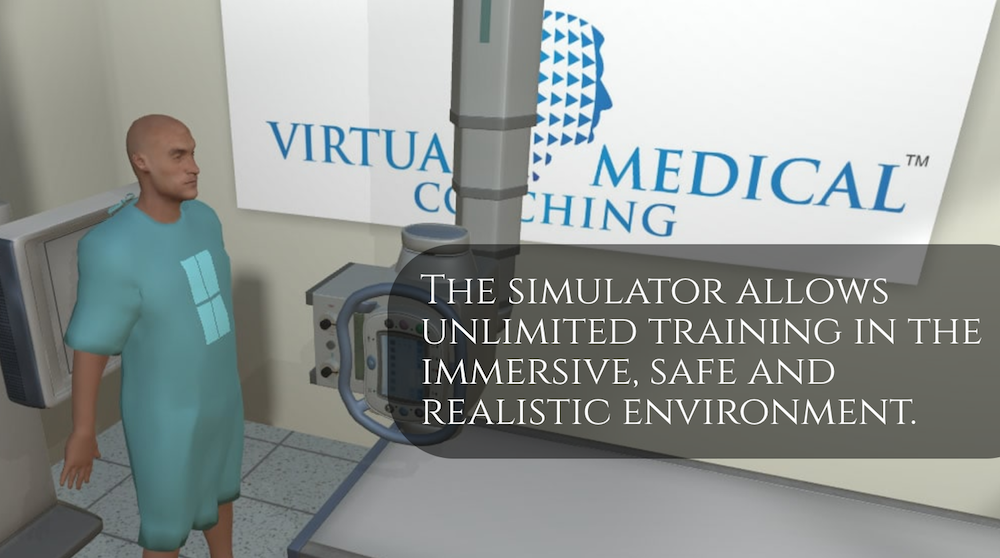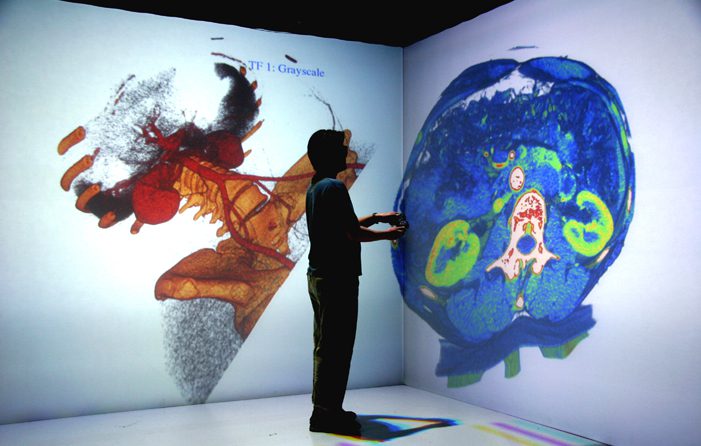When virtual reality first debuted, most people imagined it would serve as a creative means of presenting vivid video game environments. Few would have thought the technology would be used to expand knowledge and skills, especially in challenging professional fields. Yet this is exactly how virtual reality has evolved. The schools of the future will use the HTC Vive and other VR headsets for educational purposes. In particular, virtual reality will be used for educational purposes in the field of medicine. The HTC Vive can be used to provide medical students and physicians with complete medical imaging in a virtual reality context.

Virtual Reality for Medical Imaging Education
New Zealand’s Virtual Medical Coaching (VMC) is tapping into the power of virtual reality to educate tomorrow’s doctors, surgeons and other medical professionals. The VMC Suite X-Ray Trainer is the group’s initial module of its medical imaging suite that can be accessed by tertiary educators across the globe. The beauty of this virtual reality tool is that it arms educators with in-depth imaging equipment and scenarios ranging from private rooms for exams to seemingly real patients for a simulation of all the components necessary to take an x-ray and perform other medical imaging techniques.
https://www.youtube.com/watch?v=CUpkDsZ4DLI
How the Virtual Reality Medical Imaging Technology was Developed
VMC contracted the work for its Suite X-Ray Trainer to several companies throughout New Zealand’s EPIC Innovation Hub. The video game development company CerebralFix played a vital role in the technology’s advancement. VMC also relied on a virtual reality studio known as Corvecto and Skilitics, an e-learning platform group. The end result was a first-of-its-kind virtual reality application for realistic medical training.

Why VR Medical Imaging is so Important
Virtual reality empowers medical students to obtain an intricate understanding of how advanced medical equipment is operated. This education is vitally important for those who are learning how to properly analyze the human body and its ailments. VR medical imaging allows for medical students to be guided by real-world educators and provided with the opportunity to make mistakes in a virtual learning environment. The beauty of practicing in virtual reality is that the effects of mistakes are not nearly as damaging as they would be if made in real life. Patients will certainly be happy to hear that medical students will soon be getting their mistakes out of the way in a virtual environment before treating real-world human beings.
 The Comparably low Cost of VR Medical Imaging
The Comparably low Cost of VR Medical Imaging
Virtual reality medical imaging hardware costs are egregiously low compared to actual x-ray machines. In fact, virtual reality medical imaging technology costs less than 1 percent of the typical x-ray machine. This is precisely why tertiary providers across the globe are opting for the VMC Suite as opposed to the real-world physical machines.
VMC Suite Benefits Beyond Cost
The VMC Suite is rapidly growing in popularity for reasons beyond its comparably low cost. This virtual reality medical imaging technology does not require any sort of yearly certification or regular maintenance. It will function as intended when desired no matter what. Furthermore, VMC Suite can be transported just about anywhere. It takes up little space and receives regular software updates to guarantee that medical students have consistent access to the latest tech developments. This trailblazing technology even empowers educational institutions to add new courses that otherwise could not be offered because of insufficient equipment.
The VMC Suite Will Continue to Expand
VMC will soon be enhanced to include more than the X-Ray Trainer. It won’t be long until more modules are provided to subscribers that provide Ultrasound, CT, MRI and an array of other high-tech medical equipment for students’ use.





